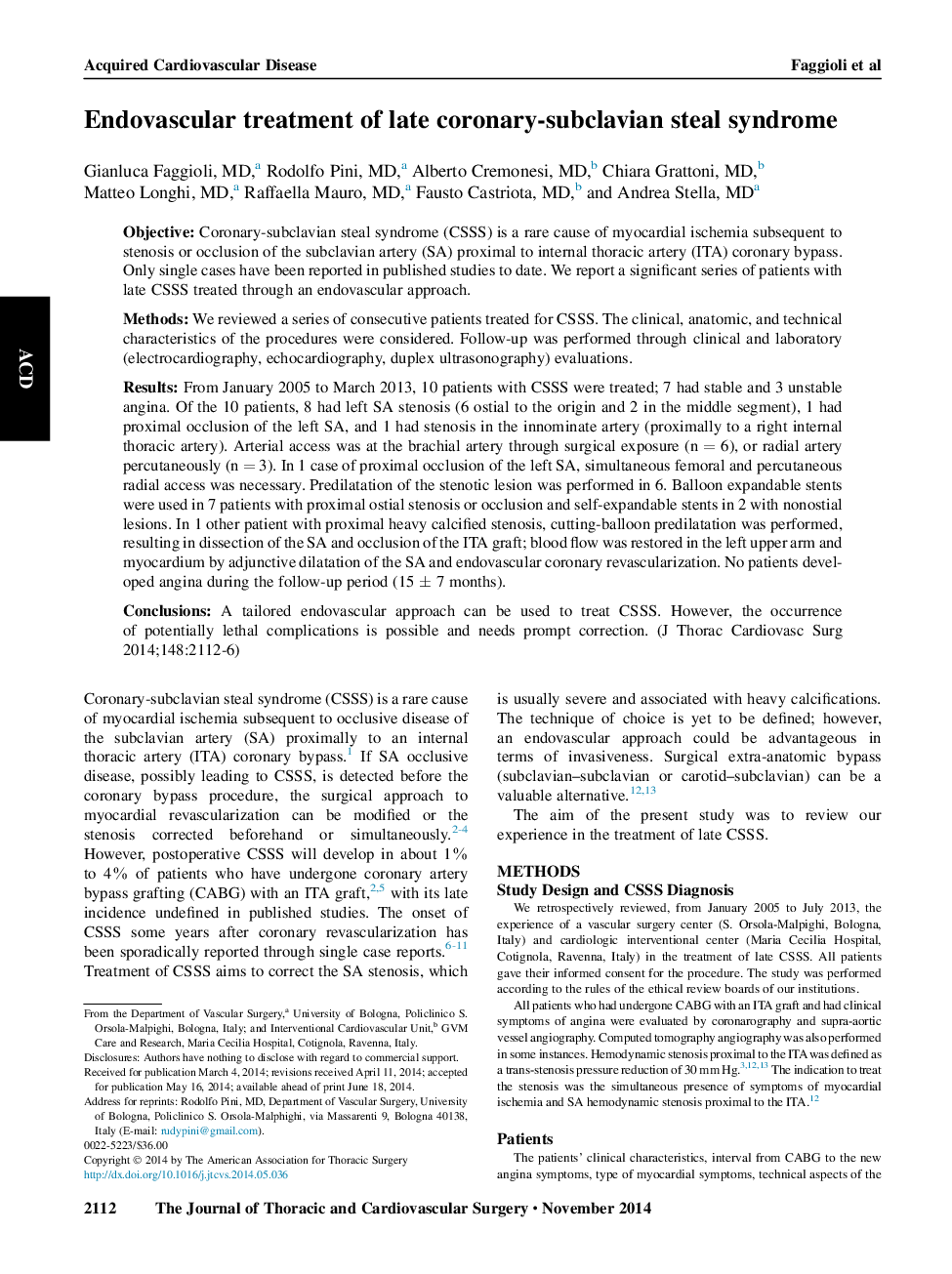| کد مقاله | کد نشریه | سال انتشار | مقاله انگلیسی | نسخه تمام متن |
|---|---|---|---|---|
| 5989557 | 1578605 | 2014 | 5 صفحه PDF | دانلود رایگان |

ObjectiveCoronary-subclavian steal syndrome (CSSS) is a rare cause of myocardial ischemia subsequent to stenosis or occlusion of the subclavian artery (SA) proximal to internal thoracic artery (ITA) coronary bypass. Only single cases have been reported in published studies to date. We report a significant series of patients with late CSSS treated through an endovascular approach.MethodsWe reviewed a series of consecutive patients treated for CSSS. The clinical, anatomic, and technical characteristics of the procedures were considered. Follow-up was performed through clinical and laboratory (electrocardiography, echocardiography, duplex ultrasonography) evaluations.ResultsFrom January 2005 to March 2013, 10 patients with CSSS were treated; 7 had stable and 3 unstable angina. Of the 10 patients, 8 had left SA stenosis (6 ostial to the origin and 2 in the middle segment), 1 had proximal occlusion of the left SA, and 1 had stenosis in the innominate artery (proximally to a right internal thoracic artery). Arterial access was at the brachial artery through surgical exposure (n = 6), or radial artery percutaneously (n = 3). In 1 case of proximal occlusion of the left SA, simultaneous femoral and percutaneous radial access was necessary. Predilatation of the stenotic lesion was performed in 6. Balloon expandable stents were used in 7 patients with proximal ostial stenosis or occlusion and self-expandable stents in 2 with nonostial lesions. In 1 other patient with proximal heavy calcified stenosis, cutting-balloon predilatation was performed, resulting in dissection of the SA and occlusion of the ITA graft; blood flow was restored in the left upper arm and myocardium by adjunctive dilatation of the SA and endovascular coronary revascularization. No patients developed angina during the follow-up period (15 ± 7 months).ConclusionsA tailored endovascular approach can be used to treat CSSS. However, the occurrence of potentially lethal complications is possible and needs prompt correction.
Journal: The Journal of Thoracic and Cardiovascular Surgery - Volume 148, Issue 5, November 2014, Pages 2112-2116